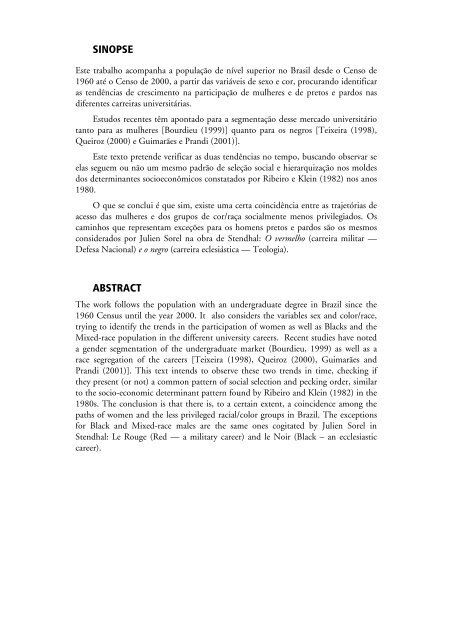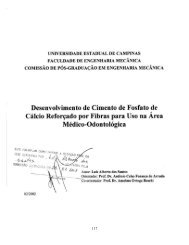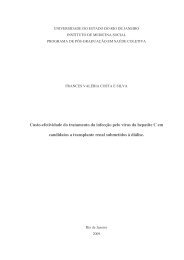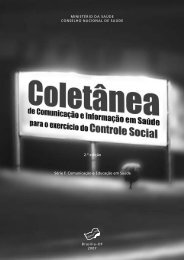O vermelho e o negro: raça e gênero na universidade brasileira
O vermelho e o negro: raça e gênero na universidade brasileira
O vermelho e o negro: raça e gênero na universidade brasileira
You also want an ePaper? Increase the reach of your titles
YUMPU automatically turns print PDFs into web optimized ePapers that Google loves.
SINOPSE<br />
Este trabalho acompanha a população de nível superior no Brasil desde o Censo de<br />
1960 até o Censo de 2000, a partir das variáveis de sexo e cor, procurando identificar<br />
as tendências de crescimento <strong>na</strong> participação de mulheres e de pretos e pardos <strong>na</strong>s<br />
diferentes carreiras universitárias.<br />
Estudos recentes têm apontado para a segmentação desse mercado universitário<br />
tanto para as mulheres [Bourdieu (1999)] quanto para os <strong>negro</strong>s [Teixeira (1998),<br />
Queiroz (2000) e Guimarães e Prandi (2001)].<br />
Este texto pretende verificar as duas tendências no tempo, buscando observar se<br />
elas seguem ou não um mesmo padrão de seleção social e hierarquização nos moldes<br />
dos determi<strong>na</strong>ntes socioeconômicos constatados por Ribeiro e Klein (1982) nos anos<br />
1980.<br />
O que se conclui é que sim, existe uma certa coincidência entre as trajetórias de<br />
acesso das mulheres e dos grupos de cor/<strong>raça</strong> socialmente menos privilegiados. Os<br />
caminhos que representam exceções para os homens pretos e pardos são os mesmos<br />
considerados por Julien Sorel <strong>na</strong> obra de Stendhal: O <strong>vermelho</strong> (carreira militar —<br />
Defesa Nacio<strong>na</strong>l) e o <strong>negro</strong> (carreira eclesiástica — Teologia).<br />
ABSTRACT<br />
The work follows the population with an undergraduate degree in Brazil since the<br />
1960 Census until the year 2000. It also considers the variables sex and color/race,<br />
trying to identify the trends in the participation of women as well as Blacks and the<br />
Mixed-race population in the different university careers. Recent studies have noted<br />
a gender segmentation of the undergraduate market (Bourdieu, 1999) as well as a<br />
race segregation of the careers [Teixeira (1998), Queiroz (2000), Guimarães and<br />
Prandi (2001)]. This text intends to observe these two trends in time, checking if<br />
they present (or not) a common pattern of social selection and pecking order, similar<br />
to the socio-economic determi<strong>na</strong>nt pattern found by Ribeiro and Klein (1982) in the<br />
1980s. The conclusion is that there is, to a certain extent, a coincidence among the<br />
paths of women and the less privileged racial/color groups in Brazil. The exceptions<br />
for Black and Mixed-race males are the same ones cogitated by Julien Sorel in<br />
Stendhal: Le Rouge (Red — a military career) and le Noir (Black – an ecclesiastic<br />
career).

















